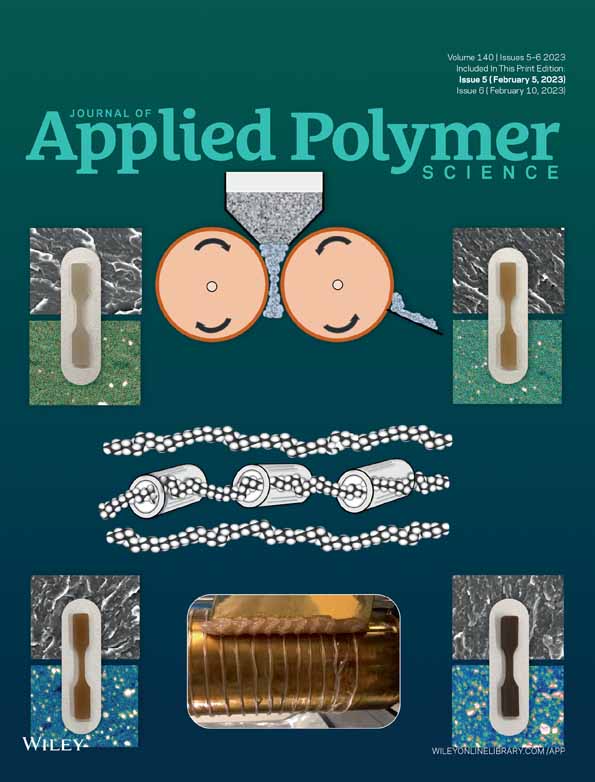A novel approach to graft silicones onto waterborne polyacrylate for synthesizing anti-graffiti coatings by polydimethylsiloxane-functionalized RAFT agent
Funding information: Nanjing Forestry University, China, Grant/Award Number: 2018YFD0600402
Abstract
Linear organoalkoxysilane-based RAFT agent functionalized polydimethylsiloxane (RAFT-PDMS) has been prepared for the first time via co-condensation of a new organoalkoxysilane based RAFT agent (RAFT-Agent), 2-((methyldimethoxysilyl)propyl)carbontrithio-2-methyl-propanoicacidmethylester, with diethoxydimethylsilane (DDS) in an aqueous acidic solution. The RAFT-Agent and RAFT-PDMS was confirmed by FT-IR and 1H NMR spectroscopy techniques. The obtained RAFT-PDMS was used to prepare the silicone-modified polyacrylate anti-graffiti emulsions via RAFT polymerization with functional monomers. The living character of RAFT polymerization of RAFT-PDMS and the narrow molecular weight distribution of the polymerization product were confirmed by GPC. The transformation of the particle state from a small micelle structure to a spherical core-shell micelle structure during polymerization was verified by TEM and dynamic light scattering analysis. Moreover, DSC and TGA analysis disclosed that increasing the content of RAFT-PDMS can reduce the glass transition temperature and improve the thermal stability of the resin. Finally, the effect of RAFT-PDMS on the surface morphology and properties of coatings were examined by SEM and contact angle. These experimental results suggest that increasing the content of RAFT-PDMS increases the surface porosity of the coating film and thus enhances its hydrophobic properties.
Open Research
DATA AVAILABILITY STATEMENT
The data that support the findings of this study are available from the corresponding author upon reasonable request.




